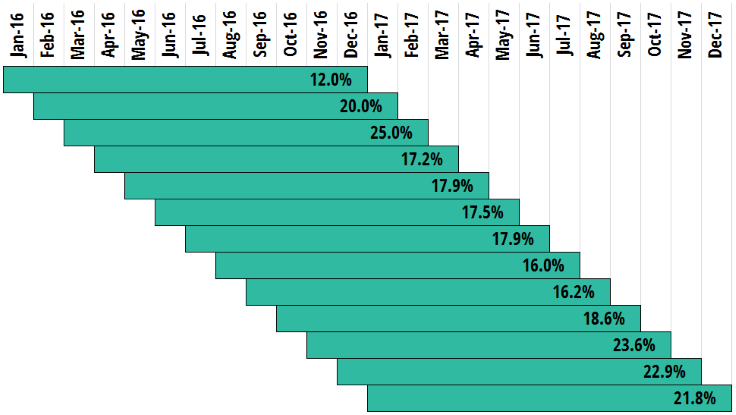Rolling returns are a way to measure the performance of an investment over various periods of time by continuously rolling those periods forward. Instead of just looking at the total return over a fixed time frame (like one year), rolling returns provide a more dynamic view by calculating returns for overlapping periods.
Here's a simple example to illustrate:
Let's say you have an investment in a stock and you want to measure its rolling one-year returns over a five-year period.
Start by looking at the stock's performance over the first year.
Then, instead of stopping there, you roll the window forward by one day and recalculate the one-year return.
Repeat this process every day for the entire five-year period.
This way, you'll have a series of one-year returns calculated from different starting points, providing a more comprehensive picture of how the investment has performed over time.
Rolling returns help investors see how an investment's performance fluctuates over different market conditions and economic cycles, which can be valuable for evaluating its long-term consistency and risk. It's like taking multiple snapshots of the investment's performance over time, rather than just one static picture.
Thanks for reading Prerna’s Substack! Subscribe for free to receive new posts and support my work.



HI Prerna, nice to come across this, u did a great job, there is one question bothering me, in day to day life of a investor, how practical is this to record each stock's perfromance ? can u give us some example to clarify uses of this.
Thank you